Tepic, Nayarit 作者: 来源: 发布时间:2021-11-11
1. Population and Area
Pop: 601 000 (city)
Area: 1983,3 km2 (munip.)
Elev: 980 masl
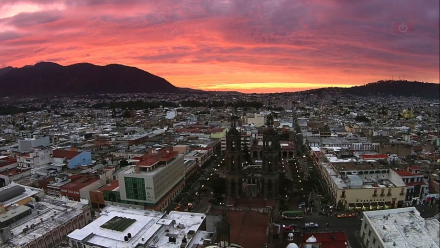
Tepic location in Mexico within the state of Nayarit
https://goo.gl/maps/zB9QfNQZZSxD91Ms9
2. Natural geography
Nature and weather
Flora and fauna
Tepic and the rest of Nayarit, thanks to the warm climate in much of the area, Nayarit has tropical vegetation, humid mountain forests and coniferous and oak forests, there are also dry and semi-dry forests (grasslands), forests (especially in the Sierra de Los Huicholes), water mangroves, among others.
In the dry forests we find white-tailed deer, boa, rattlesnake, toad and salamander. In mangroves animals such as the crocodile, bat, hawk and owl.
https://nayaritmexico.weebly.com/flora-y-fauna.html

Köppen Classification: Tropical and Subtropical Steppe Climate
Tropical savanna climates have monthly mean temperature above 18°C (64°F) in every month of the year and typically a pronounced dry season, with the driest month having precipitation less than 60mm (2.36 in) of precipitation. In essence, a tropical savanna climate tends to either see less rainfall than a tropical monsoon climate or have more pronounced dry seasons than a tropical monsoon climate. Tropical savanna climates are most commonly found in Africa, Asia and South America. The climate is also prevalent in sections of Central America, northern Australia and North America, specifically in sections of Mexico and the state of Florida in the United States.
The Köppen Climate Classification subtype for this climate is "As". (Tropical Savanna Climate).
The average temperature for the year in Tepic is 68.0°F (20°C). The warmest month, on average, is June with an average temperature of 73.0°F (22.8°C). The coolest month on average is January, with an average temperature of 60.0°F (15.6°C).
The highest recorded temperature in Tepic is 103.1°F (39.5°C), which was recorded in October. The lowest recorded temperature in Tepic is 31.3°F (-0.4°C), which was recorded in February.
The average amount of precipitation for the year in Tepic is 49.3" (1252.2 mm). The month with the most precipitation on average is July with 14.4" (365.8 mm) of precipitation. The month with the least precipitation on average is March with an average of 0.1" (2.5 mm). In terms of liquid precipitation, there are an average of 89.4 days of rain, with the most rain occurring in July with 22.2 days of rain, and the least rain occurring in March with 0.4 days of rain.
https://www.weatherbase.com/weather/weather-summary.php3?s=765560&cityname=Tepic%2C+Nayarit%2C+Mexico&units=
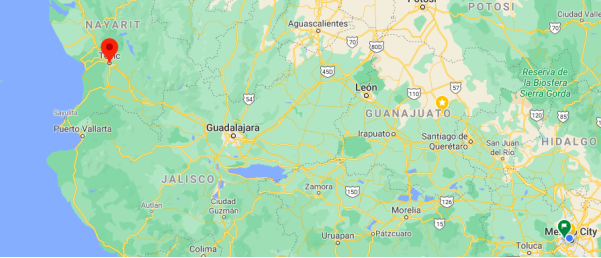
Getting there and around
Get there
By plane
The cheapest way to get from Mexico City to Tepic is to fly and bus which costs $950 - $2800 and takes 5h 55m. Tepic International Airport (TPQ IATA Amado Nervo International Airport) serves the city.
By car
The distance between Mexico City and Tepic is 644 km. The road distance is 735.2 km.
By bus – There is no direct bus from Mexico City to Tepic. However, there are services departing from Izazaga and arriving at Tepic via Mexico. The journey, including transfers, takes approximately 11h 54m.
Bus from Guadalajara is about 3,5 hours and costs less than 300 pesos in the luxury buses of Omnibuses de Mexico, just make sure not to get a "de paso" bus which usually arrives very late.
https://wikitravel.org/en/Tepic
Car Rental – To explore Mexico’s provincial towns and cities—including its beach locations and the scenery and attractions near them— consider renting a car for your visit. Having your own car will give you more flexibility than using public transport options and, in some cases, offer you access to places which are otherwise difficult to visit without the use of a car.
COVID19 - International entry into Mexico from United States
Allowed for: All visitors arriving by air. Mexico land borders are closed to non-essential travel
Restricted for: There are no current restrictions.
Get around
Local Buses – Local buses and mini-buses (combis or micros) are available locally for a fraction of the cost of a taxi around town. You need to speak Spanish to be able to ask for directions or ask the driver to tell you where to get off.
Local buses (6 pesos) operate from around 6am to 9pm. Combis (6 pesos) operate along Avenida México from 6am to midnight. There are also plenty of street taxis and a taxi stand opposite the cathedral.
Taxis – Taxis in most of Mexico’s towns and cities are not metered, so agree your price before you get in. Taxi travel is very affordable in Mexico, in comparison to the USA, Canada and Europe, and so provides a viable means of public transportation in Mexico. Your hotel can arrange taxis for you; some post their rates on a board in the lobby; taxi hotel rates are usually higher than cabs you hail off the street. If you speak Spanish, you will have a distinct advantage and be able to negotiate a price with the driver.
Uber is expanding rapidly across Mexico and now offers services in cities across the country, including: Mexico City, Toluca, Cuernavaca, Puebla, Querétaro, León, Aguascalientes, San Luis Potosí, Guadalajara, Monterrey, Hermosillo, Tijuana, Mexicali, and Mérida. Uber has been adding Mexican cities to its network every year, check for availability when you arrive at your destination in Mexico.
Cabify and Didi are also developing and currently operate in cities including Mexico City, Toluca, Monterrey, Puebla, Querétaro and Tijuana. Check for availability in the city you are visiting.
These services offer people with smartphones a way to book a cab through a mobile app for a pre-agreed price. Fares are comparable with Sitio type cabs, and sometimes trade at a premium to this when local demand increases.
https://www.lonelyplanet.com/mexico/central-pacific-coast/tepic/narratives/practical-information/transport/getting-around
https://www.mexperience.com/transport/taxi-travel-in-mexico/#51
3. Economy
GDP: 24 485.2 M MXN (2010)
https://dialnet.unirioja.es/servlet/articulo?codigo=4954700
4. Industry characteristics
The economy that exists in the municipality of Tepic has developed over the years, where it has been contracted with the active participation of the inhabitants who work and who are considered economically active. Given this, one of the sectors that has benefited the most from the advances that have occurred in this territory is agriculture, which has allowed to develop little by little where farmers are in charge of making the sowing and then obtaining the crops of the products that they later commercialize locally and regionally in other parts of the state of Nayarit. The predominant crops in Tepic are based on sugar cane, mango, avocado, coffee and lemon, which is due to the type of soil that exists in the area where the municipality is located, where most of the surface is located. It is temporary, which means that agriculture is developed temporarily as long as the climate allows adequate sowing and harvesting.
Agriculture has been strengthened over time and is composed of a set of techniques and knowledge that farmers must know to be able to grow crops on the land, where the way it is done has a lot to do, because in times Today some farmers use modern techniques to work the land while many others continue to do so in the traditional way. Most of the primary sector is dedicated to this activity, from which large annual profits have been obtained. The jobs that exist in this area are those of soil treatment and vegetable crops, where people do things that modify the natural environment, in order to make crops grow in a short time. All the economic activities that this sector contemplates are based on the exploitation of the resources that the earth originates in a natural way, which is also favored by the activities that are carried out and from which plant food crops such as cereals, fruits can be obtained. , vegetables, cultivated pastures and forages.
The economy of Tepic is also strengthened by livestock, where the pasture area used for livestock use and based on what was indicated by INEGI, when the observation period was carried out in previous years, they found that they were used close to of 26,665 hectares, which represented 9.53% of the surface. It should be said that regarding the production of other livestock products that are made in the indicated municipality, there is bovine milk with 23.54% of thousands of liters compared to the total production obtained at the state level; Another product is the egg for a plate and represents 54.35% of the tons produced per year. Livestock is undoubtedly an activity that has managed to get ahead thanks to the active participation of people who focus their efforts on it, from which great profits are obtained per year and this allows the number of cattle that are cared for to continue to increase. to obtain products derived from animals.
Industry is found within the secondary sector and it has been maintained and developed over time, which began in the seventies, due to the participation of a significant number of people. The sugar industry that has benefited the most is with the mill called El Molino and it is precisely located in the municipality of Tepic, in addition to the Puga mill which is located in the town of Fráncico I. Madero, as well as the British American Tabacco abacaleras companies. México y Tabacos Desvenados SA de C.V. All these industries represent important sources of employment for the peasant families of Tepic. It should be noted that there are also two soft drink bottling companies, construction material factories, food and beverage packers, clothing manufacturing, among others. The industry has been one of the most developed and this is due to the workforce of people who are economically active and who focus on carrying out various activities within this important sector.
On the other hand, there is the tertiary sector, which the INEGI points out that incorporates almost 60% of the population that is economically active (EAP). Commerce is in this sector and it is reflected in the existence of small establishments and large companies that are of renowned international chains. Commerce is a socioeconomic activity that has been basic for the mobilization of Tepic's economy, which consists of the exchange of products for the purchase and sale of goods and services, where people acquire what they need to live. It should be noted that trade centers are an essential part of commerce and that is why over time they have been opened to meet the economic needs that manage to benefit both owners and customers, giving an exchange activity that allows to mobilize the money that enters and leaves the municipality of Tepic.
Another part of the information focuses on the tertiary sector and in which tourism is also found, where based on the information obtained by INEGI, we can say that there are 9.81% of the total lodging rooms that They are registered in the state of Nayarit, which are classified according to the quality of the services they handle. The municipality of Tepic has 2,600 lodging rooms that are considered tourist category, of which 326 are 5-star, 474 are 4-star, 378 are three-star, 173 are two-star, 287 are 1-star. and there are 962 rooms that do not have a defined category.
http://www.municipios.mx/nayarit/tepic
5. Attractions
Tepic Cathedral
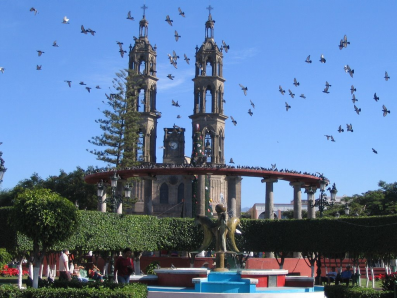
This cathedral is the symbol of excellence of Tepic. Located in the downtown area, its construction began in 1804 and was completed by the end of the 19th century. It is a little different from the other viceroyalty cathedrals in terms of its size since originally it was only going to be a parish temple to help the evangelization of the indigenous population of the area in 1524, but with the increase of its inhabitants over the years and with the opening of the San Blas port nearby, a larger structure was required.
Of neo-Gothic influence, it is an imposing but simple building with attractive lines and details, especially in its 40 meters ( 130 feet) high towers that are supported by a portico with three Gothic levels and are very slender in comparison to others. It is topped by small domes and lanterns.
When you are in front of it, don't forget to admire its natural cedar gate that will be welcoming you and inviting you to come in. Once inside, the high altar made of fine wood crowned by an enormous crucifix will capture your attention.
In addition, in the middle of it, you will find Nuestra Señora de la Asunción (Our Lady of the Assumption), who is the patron saint of this temple. Finally, don't forget to admire the vault that is decorated by a tempera mural painted at the end of the 19th century representing a passage from the Apocalypse.
https://www.visitmexico.com/en/nayarit/tepic/cathedral-of-tepic
Amado Nervo House Museum
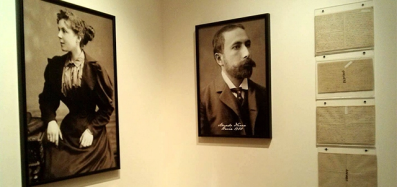
For poetry lovers, Tepic is a special destination because it is the birthplace of one of Mexico's most beloved and admired modernist poets, Juan Crisóstomo Ruiz de Nervo, better known as Amado Nervo.
Just two blocks from the cathedral, on the central street of Zacatecas No. 284, is the old neoclassical-style house built during the 19th century, where the writer was born in 1870 and took his first steps before dedicating himself fully to his passion for literature.
Since April 1970, the rooms of the house have been converted into exhibition rooms of the museum dedicated to the famous son of this city.
We recommend that you schedule a guided tour inside this building in which you can admire photographs, relevant documents in his literary work, personal items, and furniture that belonged to Nervo.
Although the museum only has three rooms, they are sufficient for the public to delve into the life and work of Amado Nervo and discover how daily life in the region greatly influenced his writings. In fact, there are several photographs and documentation of the city to broaden the panorama.
In addition, the Museo Casa Amado Nervo (Amado Nervo House Museum) organizes various conferences, editorial presentations, concerts, and literary initiation workshops to promote poetry among residents and visitors.
https://www.visitmexico.com/en/nayarit/tepic/amado-nervo-house-museum
Bellavista ex-textile factory
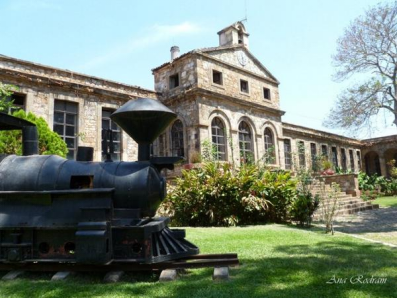
To the north of the capital of Nayarit -only 7 km ( 4 miles)- is the town of Bellavista, where there is an old factory that from the echoes of the past will tell you all the historical facts that it has witnessed among these green hills.
Since your arrival you will be captivated by the beauty of the 19th-century construction whose design was the exact replica of a building in Ghent, Belgium called "Nerlands", which means Bellavista. This building constructed in 1814 brought new life to the community by opening its doors as a spinning and weaving factory.
Although the building is beautiful with its bricks and stones of reddish and gray tones, it keeps a very important moment for the history of the region. During its time of greatest splendor, up to 350 workers provided their labor in grueling days of 14 to 16 hours a day. This, together with the fact that any error was punished no matter how small and there were no labor rights, began the discontent of the workers who organized a strike on March 20, 1905, being the first workers' strike of the 20th century, which would lay the foundation for the beginning of the Mexican Revolution.
The factory continued to operate until it closed in 1990. Currently, it serves as a meeting point for those who visit it attracted by its beautiful architecture with a facade topped by a clock and a bell, as well as its chimney that in past times didn't stop throwing smoke.
The complete tours go into the streets of Bellavista, el Ex Convento de la Santa Cruz (the former Convent of the Holy Cross), and to finish, the visit to the textile factory.
https://www.visitmexico.com/en/nayarit/tepic/bellavista-ex-textile-factory
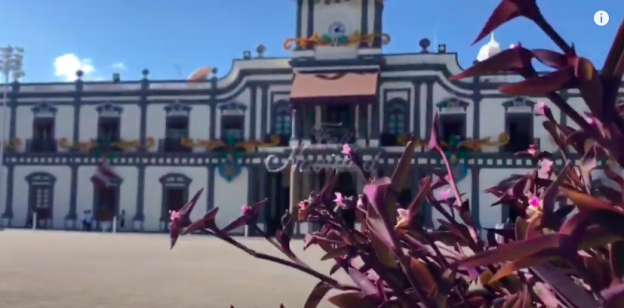
5 lugares que visitar en Tepic || Luis Daniel Queso
https://youtu.be/QFiEE5YsdZg
6. History
The founding of Tepic dates back to pre-Hispanic times, around 600 BC. C. to 350 a. C. inhabited by groups that migrated to the center of the territory of the current state of Nayarit. They developed agricultural activity by building cultivation terraces, and they were dedicated to the manufacture of fishing instruments, such as nets made of vegetable fibers.
The first Spaniard to arrive in Nayarit was Francisco Cortés de San Buenaventura, nephew of the conquistador Hernán Cortés, in 1526. The indigenous lordships of the region surrendered to him peacefully. The definitive conquest was initiated by Nuño Beltrán de Guzmán, on March 6, 1530. When the first Europeans arrived in these lands, Tepic was a tlatoanazgo (subordinate population), which depended on the hueitlatoanazgo (chiefdom) of Xalisquillo.
Cortés de San Buenaventura ordered the first census of the town to be carried out, a task carried out by Gonzalo Cerezo. As a result, 200 homes and 400 inhabitants were registered.
First capital of the Kingdom of New Galicia
When Hernán Cortés was awarded the title of Captain General of New Spain, Nuño Beltrán de Guzmán decided to abandon his position as President of the Royal Court and organized a military expedition in search of wealth to the northwest of Mexico, conquering large territories of what currently are the States of Jalisco, Nayarit, Zacatecas, Aguascalientes and Colima.
On November 18, 1531, he founded the town of Espíritu Santo, which later would become the current Tepic. On July 25, 1532, a royal certificate issued in Ocaña, Spain, by Juana Reina de Castilla, ordered that the conquered territories be named Kingdom of New Galicia and the town founded by Nuño Beltrán de Guzmán would become known as Santiago de Galicia de Compostela.
In 1540, rebellious natives from the town of Huaynamota assassinated the Spanish conqueror Juan Ruiz de Arce. This forced Governor Cristóbal de Oñate to move the Spanish settlement to the Coactlán Valley, where he re-established the population of Santiago de Galicia de Compostela, a population that during the time of the viceroyalty was known as Compostela de Indias and is currently known as Compostela. In this way, Tepic recovered its indigenous name which remains to this day.
Cortés's third expedition to the South Sea
After having sponsored two exploration trips to the South Sea (Pacific Ocean) and without having obtained material results, Hernán Cortés decided to lead the third exploration trip to the newly discovered lands in the South Sea by the navigator Fortún Jiménez in command From an expedition sponsored by Cortés himself, these new lands belonged to the conqueror of Mexico by Royal Decree.
Cortés annoyed because Nuño de Guzmán, his longtime arch-enemy, had requisitioned a ship, the San Miguel ship, during the first expedition that he supported, in addition to the Concepción ship that Cortés had sent on the second exploration trip of the South Sea, He decided to confront it on his own ground and from there mount the third expedition, for this he prepared a large number of troops on foot and on horseback to march on the province of Nueva Galicia of which Nuño de Guzmán was governor.
Tepic grew in importance with the re-foundation in 1768 of San Blas as a high-altitude port, to the extent that it became the most prosperous port in the North Pacific. Due to the importance that the port took, Tepic became an important mid-journey and trade point for travelers and products that arrived on the Naos from the Philippines, which landed in San Blas bound for Guadalajara. Also having the route such a great importance.
Time of independence
On July 24, 1811, it received the title of "noble and loyal city of Tepic" by the Cortes Generales and by Don Fernando VII, for having been a realistic city in that year. When Mexico achieved its independence, Tepic was incorporated as the capital of the 7th. Canton of the State of Jalisco. After the fights of Tepicenses and Jalisco when discussing whether San Blas belonged to one or of those, and after the decline of San Blas as a high-altitude port, the importance of Tepic in the economic plane in western Mexico was diminishing.
Around 1830, the Barrón y Forbes house was established in Tepic, which he founded in 1833 in the town of Jauja, a yarn and fabric factory, shortly after Don José María Castaños built the Bellavista textile factory. In these two companies the economic development of the city was conceived.
Twentieth century
In 1900-1910, progress seemed just around the corner in the city of Tepic. The new public lighting had been shining since 1906, 24 telephone lines, potable water and drainage were installed; the parks were enlarged, the squares had kiosks and benches. The periphery of the old part of the city dates from this period. During the first stage of the Revolution, on May 26, 1911, General Martín Espinosa took possession of the city, replacing the Porfirian political leader Leopoldo Romano.
Tepic today
With more than 600,000 and an area of no more than 2,000 km², it is adjacent to the urban area of the neighboring municipality of Xalisco. Currently the urban area is growing towards the east of the city, mainly towards the towns of Mora and La Cantera, where a large number of housing complexes of social interest have spread.
Within the city is the Molino de Menchaca, a factory specialized in extracting and marketing sugar, some bottling of sauces and soft drinks as well as small toast factories.
7.Contact Information
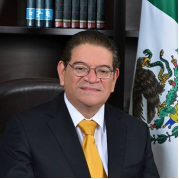
City Mayor: Francisco Javier Castellón Fonseca
Contact number: +52 (311) 215 3200, ext. 3200
Govt. Office Address: Palacio Municipal, de la calle Puebla, sin número, colonia Centro, Tepic, Nayarit
FB: https://www.facebook.com/JavierCastellonFonseca
Twitter: https://twitter.com/JorgeSalum
Website: http://tepic.gob.mx
E-mail: presidente@tepic.gob.mx
